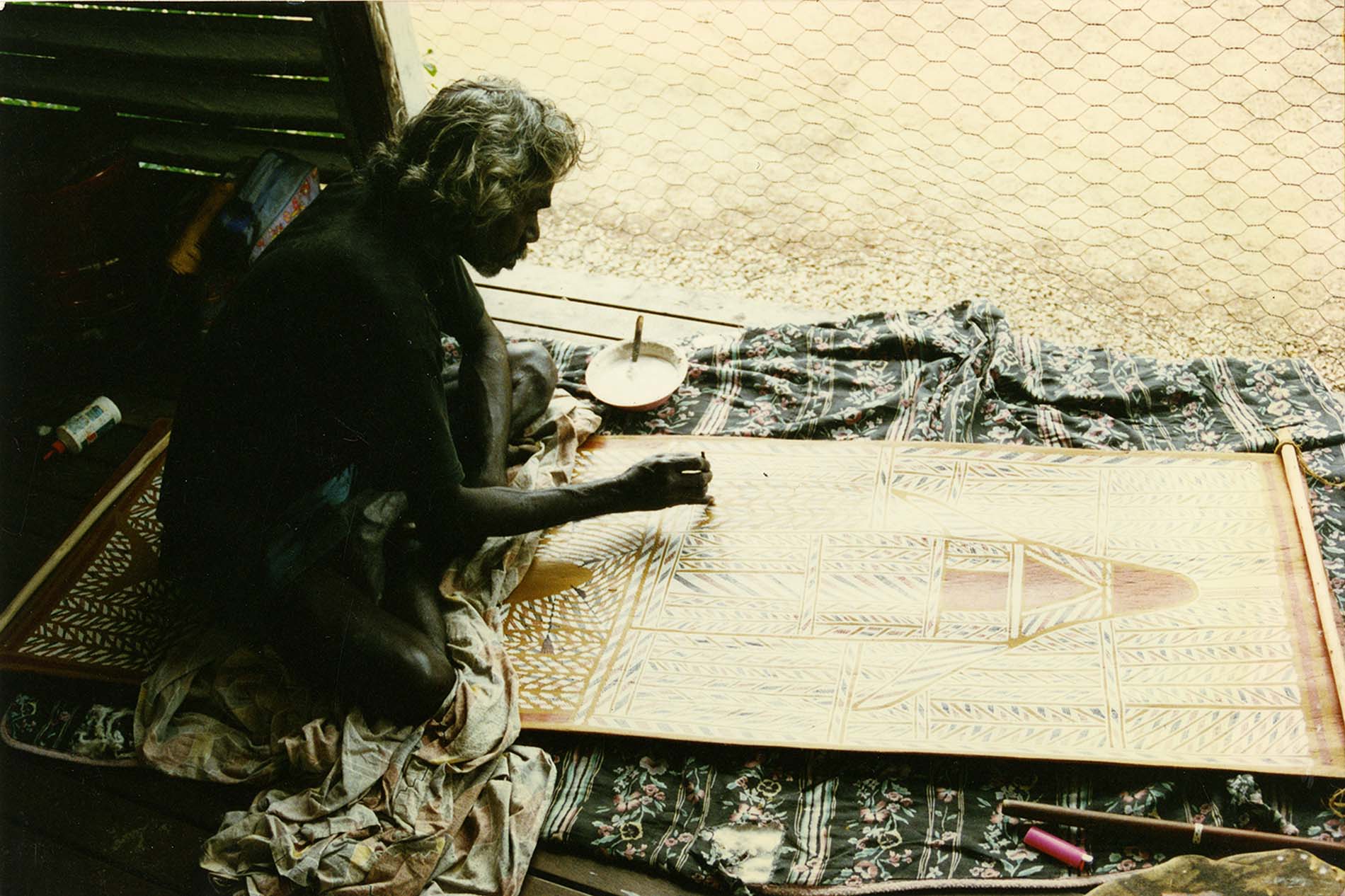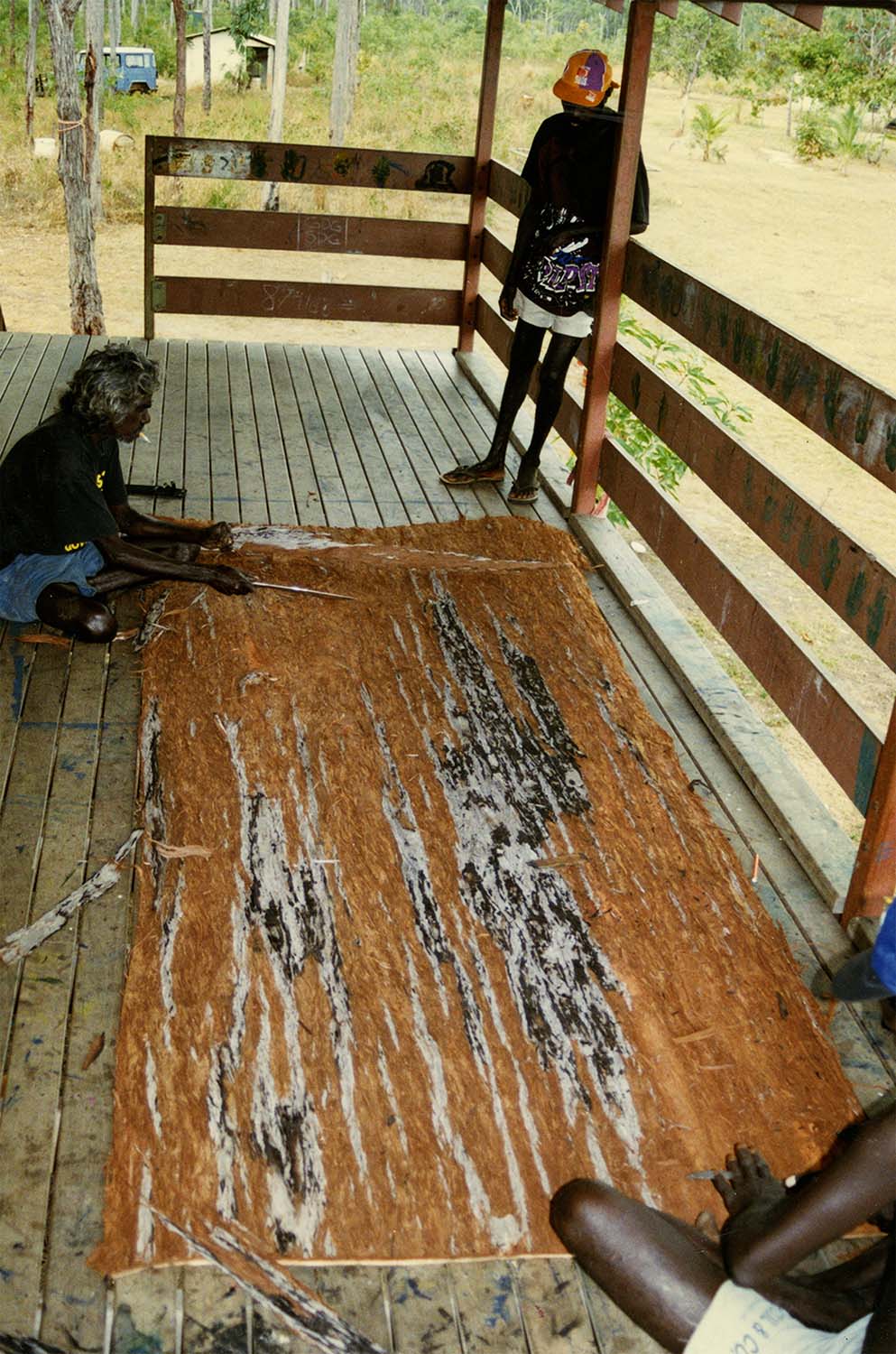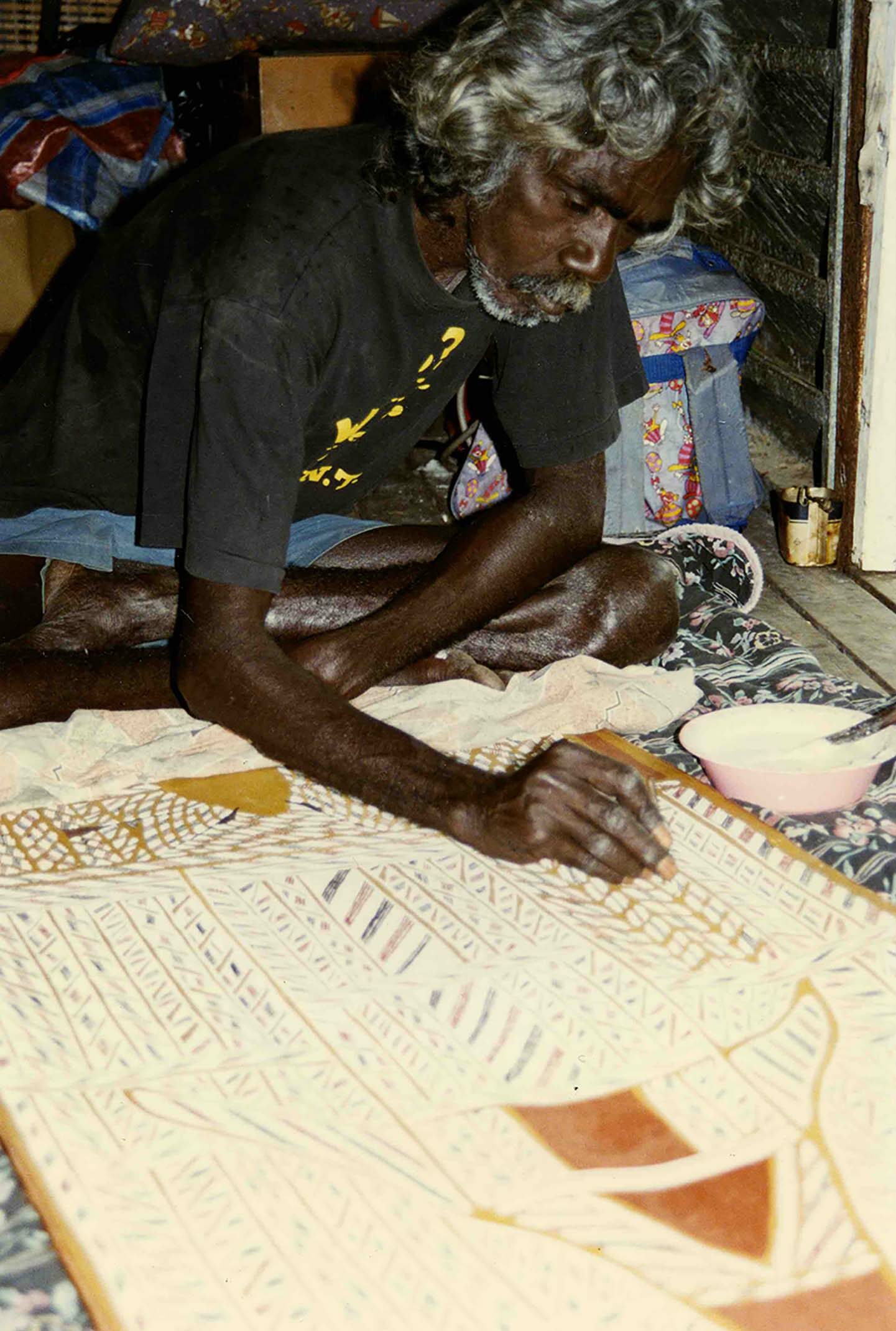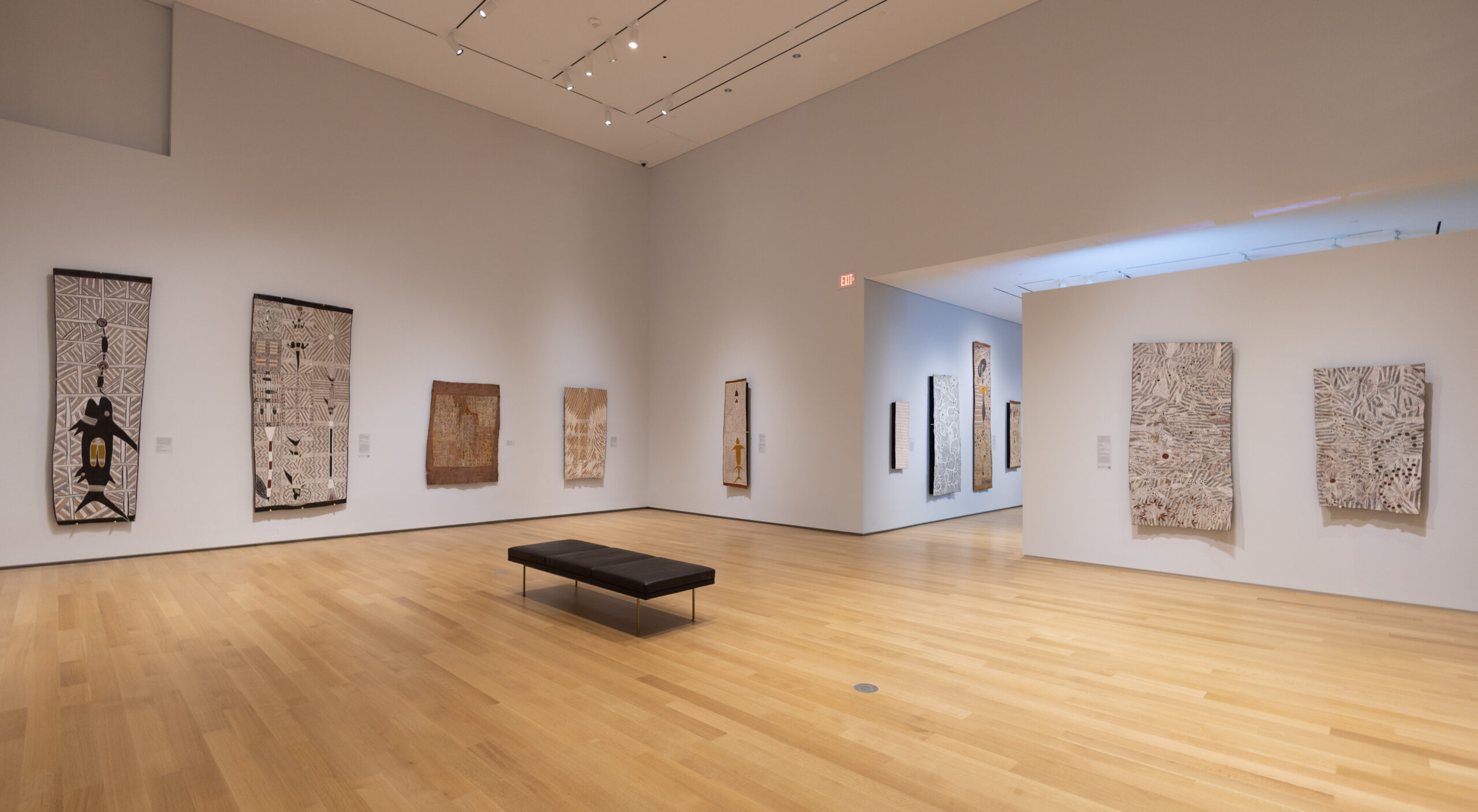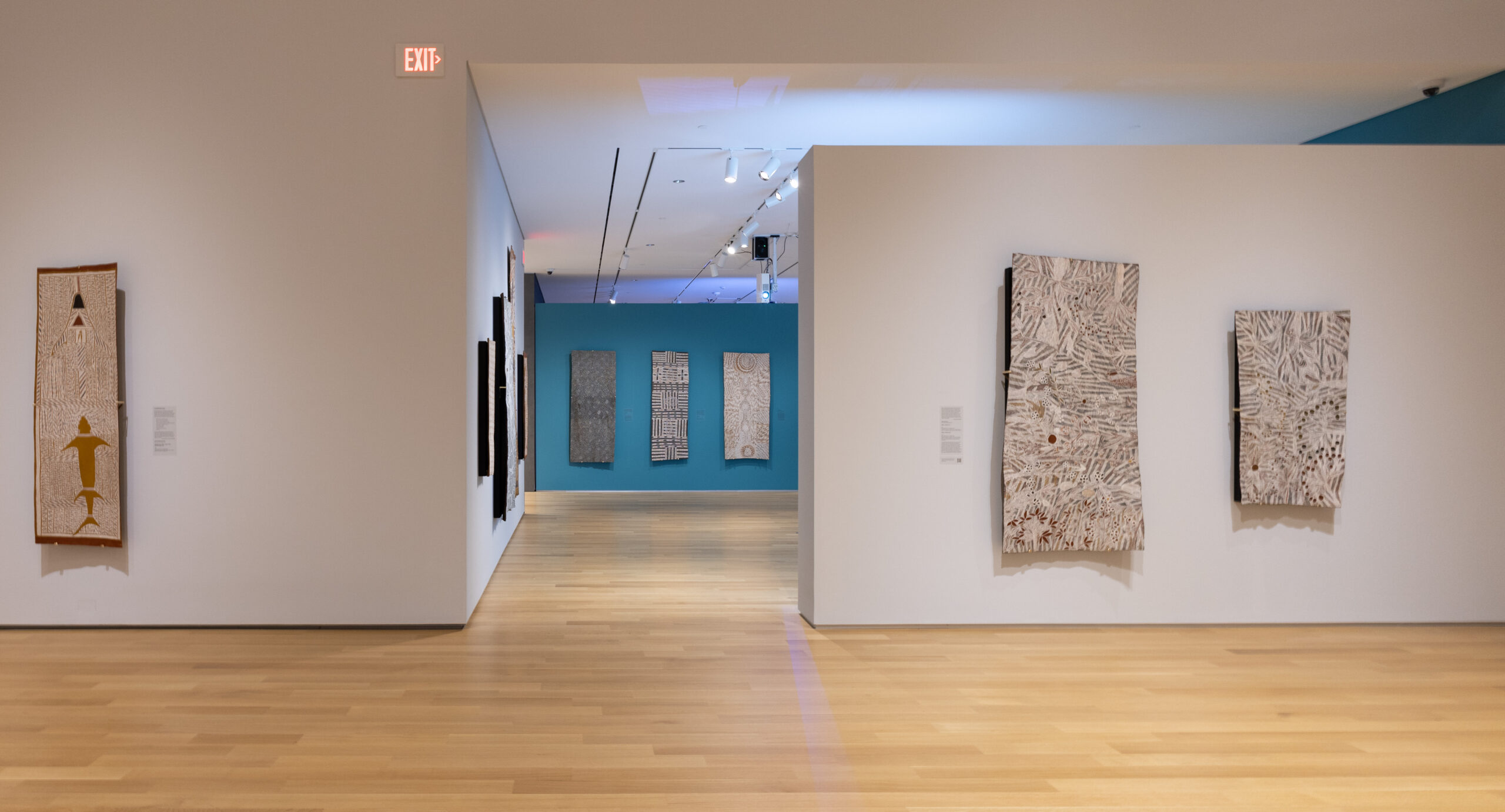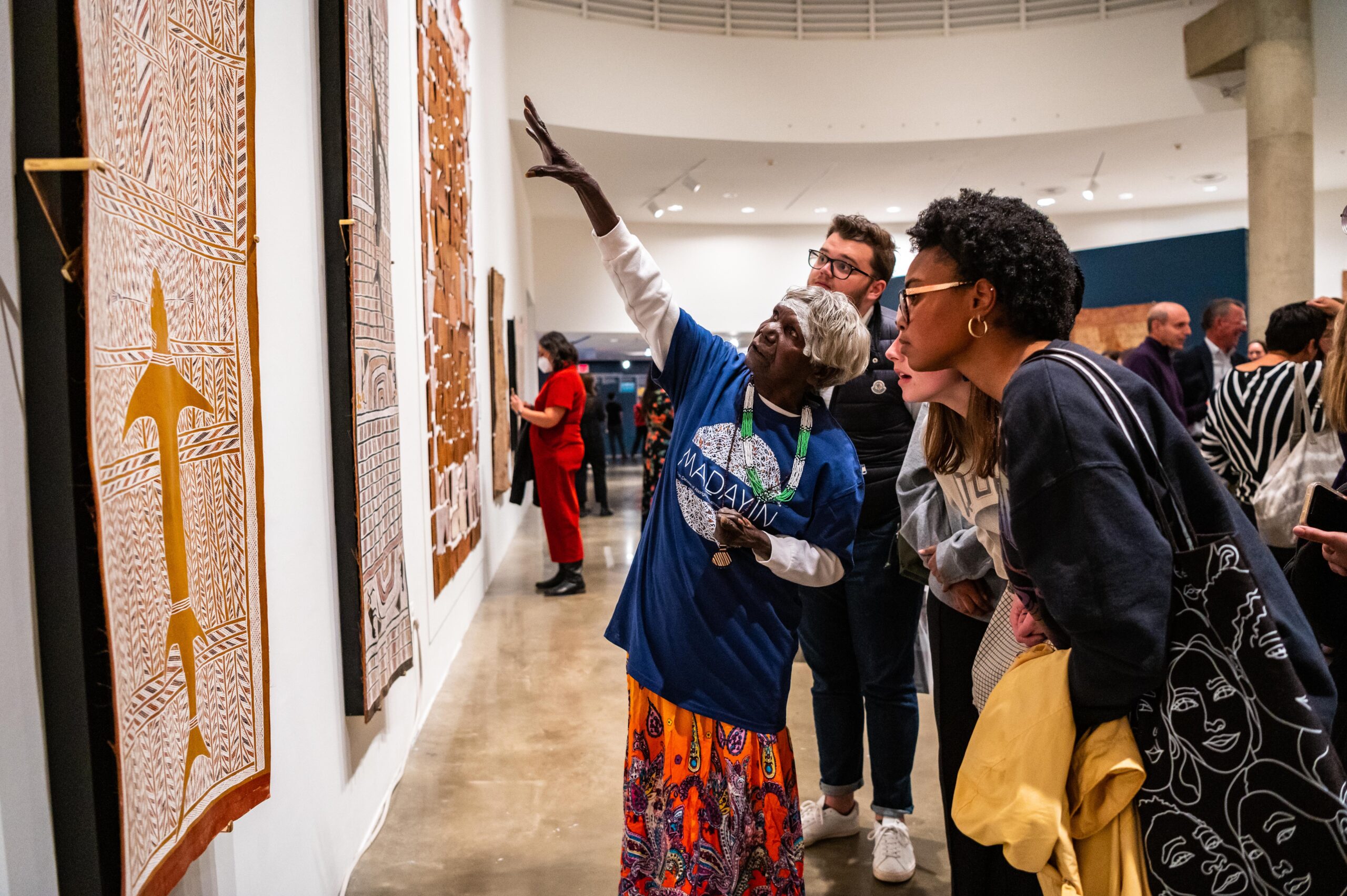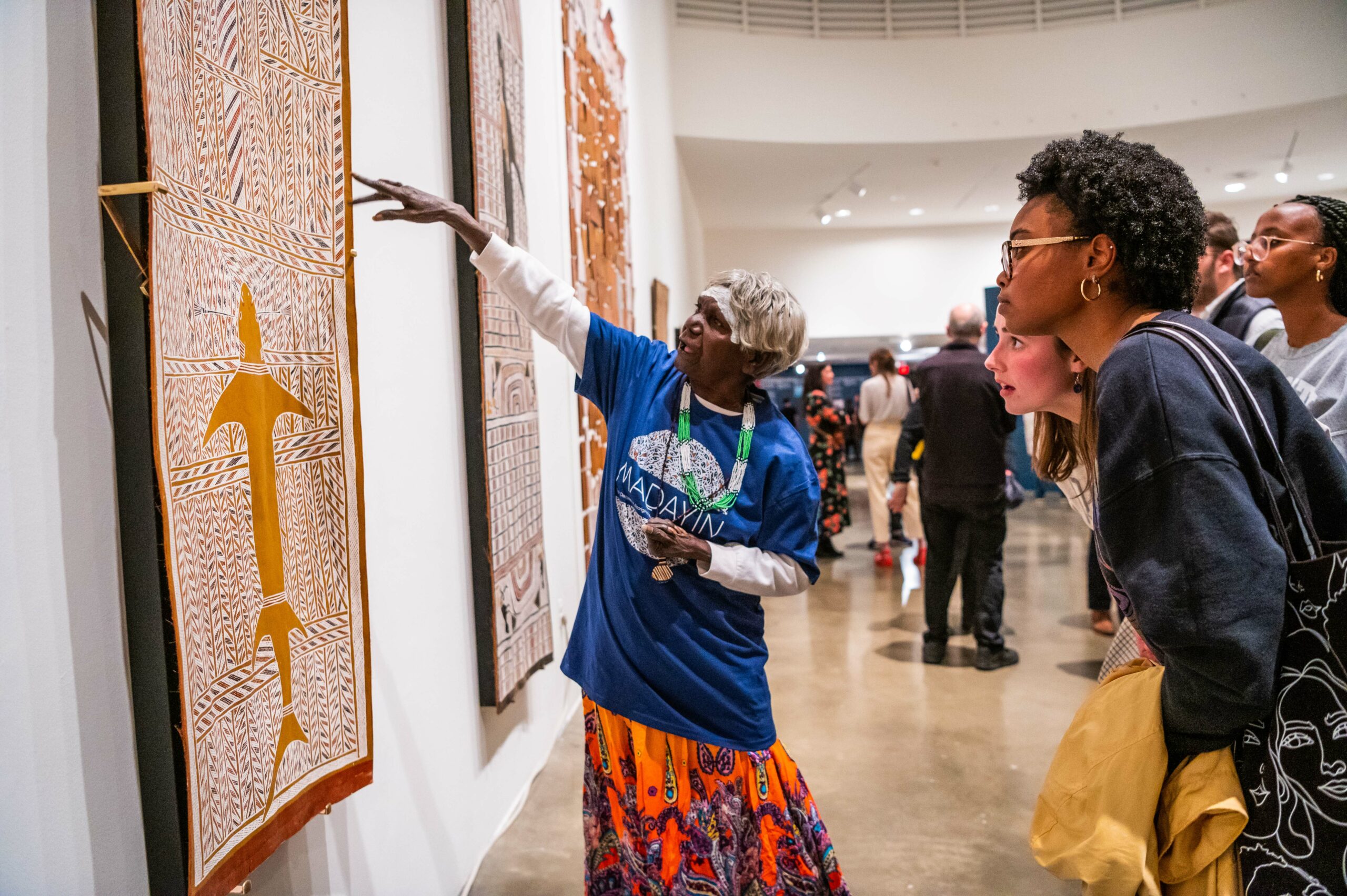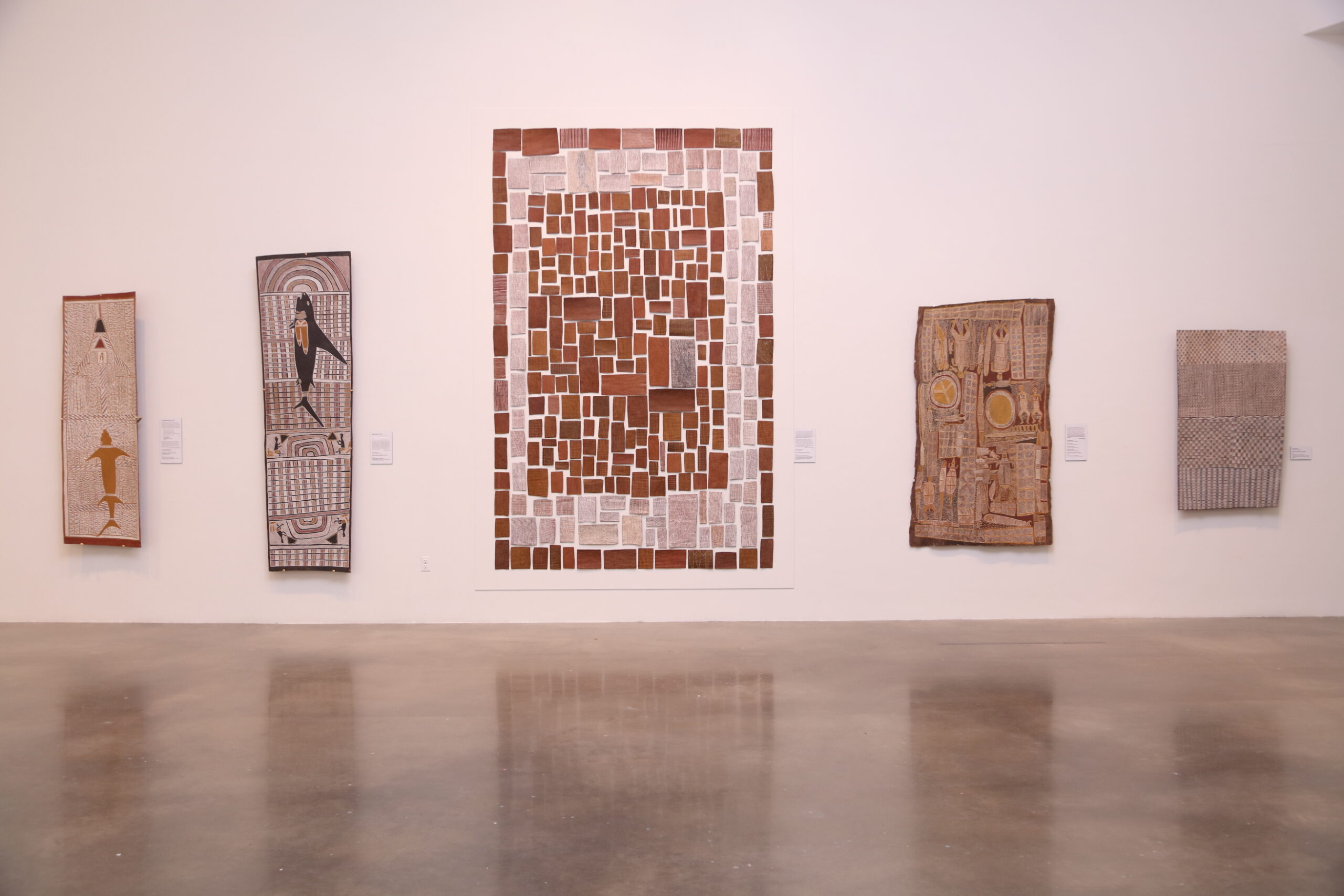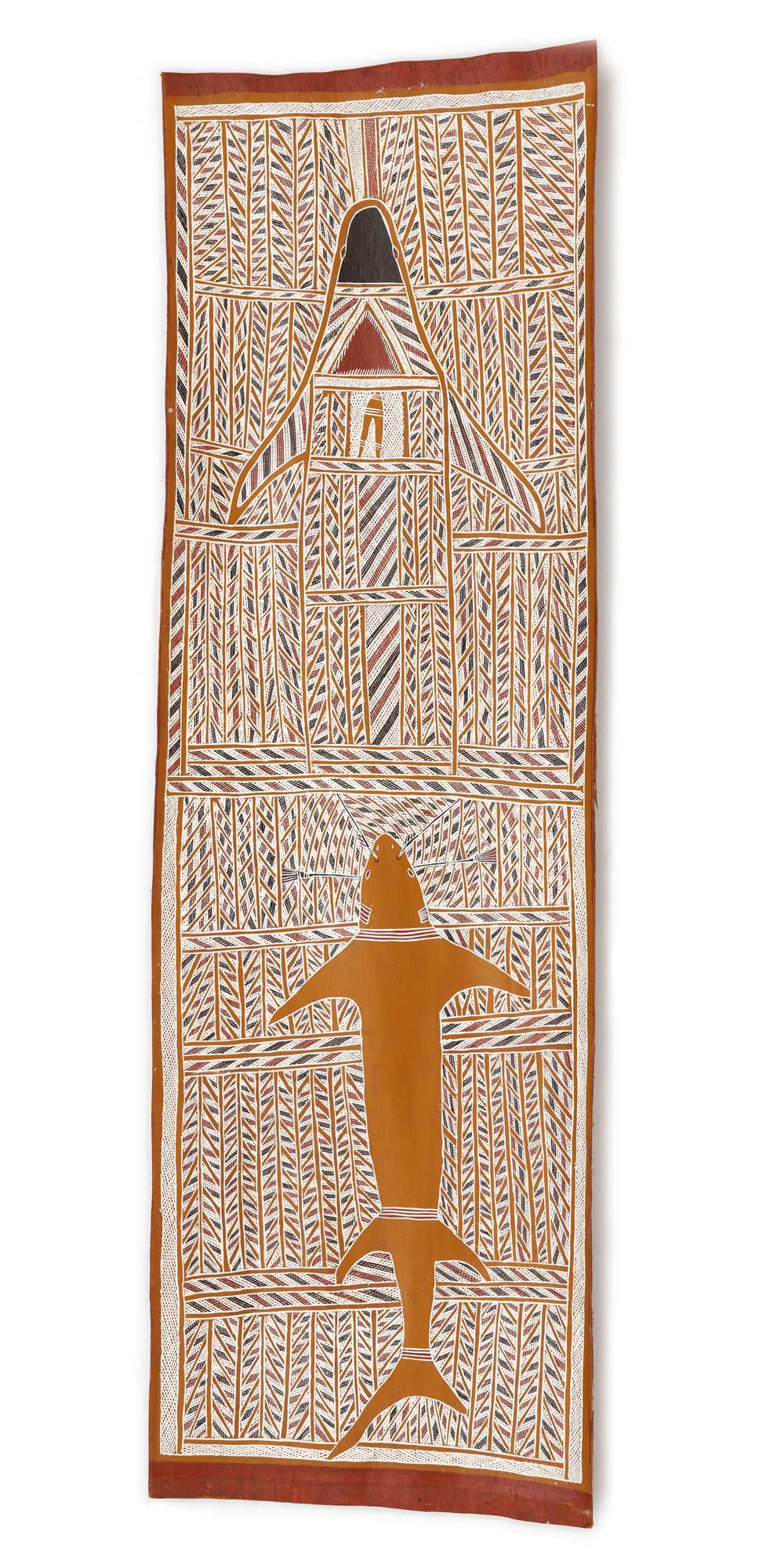
"Djawaḻ’ is where the shark begins his journey. He was speared at a place called Garraṯa. Murayana threw the spear. He was traveling by himself, walking along, coming from a place called Djimbarrdjimbarrwuy. That is his place. And he climbed up a hill and looked this way.
And the shark felt the wind change. He felt the wind, Wuyumbul, change. A wind belonging the Dhuwa moiety. That was what made him wary, ready to move. He intuited from the wind that someone, or something, was coming there now. But he kept going.
Murayana kept going too. He climbed up a hill and turned and saw a good shark, my own märi. The Gupapuyŋu ancestral being, Murayana, sees the Djambarrpuyŋu shark. “Hey, what do we have here?” Murayana said in his Gupapuyŋu language. “My child?” Maybe that’s what he said. “I’m just going to spear it now,” he said. The spear he was carrying was called a baṯi, Warrawuṉbuṉ, nimatpili. His was a barbed spear. He kept traveling, and he put his spear in his spear thrower, took aim, and speared the shark. He turned in shock as the spear wounded him. The place was Garraṯa Binyanbi, where he was speared.
“What’s this that’s got into me? My body is hurting. I’m feeling no good.”
Here, at the top of the painting, you can see him after that happened. He was exhausted. This was how he felt, he was a spirit, or maybe a reincarnation of himself. He went on as a spirit for a time, but then he became a body again. He went away with that spear in him, searching, looking for a home. He searched and he slept. He tossed and turned. The wind changed. “Where is this wind coming from, Wuyumbul? Is this wind coming from my home?” he cried.
So, he went on looking. He kept going."
– WILSON MANYDJARRI GANAMBARR
More Info
In this work, Manydjarri has painted imagery from his märi (mother’s mother’s clan), the Djambarrpuyŋu clan. This painting refers to the spearing of the ancestral shark Bul'manydji by a Yirritja spirit man named Murayana. The bottom and top halves of the painting show the shark before and after he is speared. The artist called the top image of Bul'manydji “the ghost” and the bottom image “wounded.” The shark is wearing the Yirritja barbed spears and producing the Dhuwa spears Dhämarrarr, which are traditionally made from stingray barbs. The ancestral shark is set against Djambarrpuyŋu clan designs and saltwater patterns.
– Buku-Larrŋgay Mulka Centre
Additional Information
Decade
1996
Medium
Natural pigments on eucalyptus bark
Dimensions (IN)
75 ⅞ x 22 ¾
Dimensions (CM)
192.72 x 57.79
Credit
Kluge-Ruhe Aboriginal Art Collection of the University of Virginia. Gift of John W. Kluge, 1997. 1996.0035.017
Narrative
Djambarrpuyŋu
Djambarrpuyŋu is the name used for both a clan of the Dhuwa moiety, and one...
Songline
Mäṉa | The Shark
Ancestral sharks, or mäṉa, play an important role in the songlines of several Dhuwa moiety...
Location
1990s
Buku-Larrŋgay Mulka Centre began the 1990s in a phase of rebuilding. By the end of...
About The Artist(s)

Clan
Ḏäṯiwuy
Artist Dates
Born c.1945
Alternative Names
Majiri, Matyiri
Wilson Manydjarri Ganambarr
The son of Mowarra Ganambarr, Manydjarri Ganambarr is the current leader of the Ḏäṯiwuy clan. He splits his time between Milingimbi, Yirrkala and Galiwin’ku (Elcho Island) and has painted for all three art centers. He is an extremely knowledgeable and powerful song man who paints intricate designs from both his mother’s and father’s estates.
Collections Represented
Kluge-Ruhe Aboriginal Art Collection of the University of Virginia


